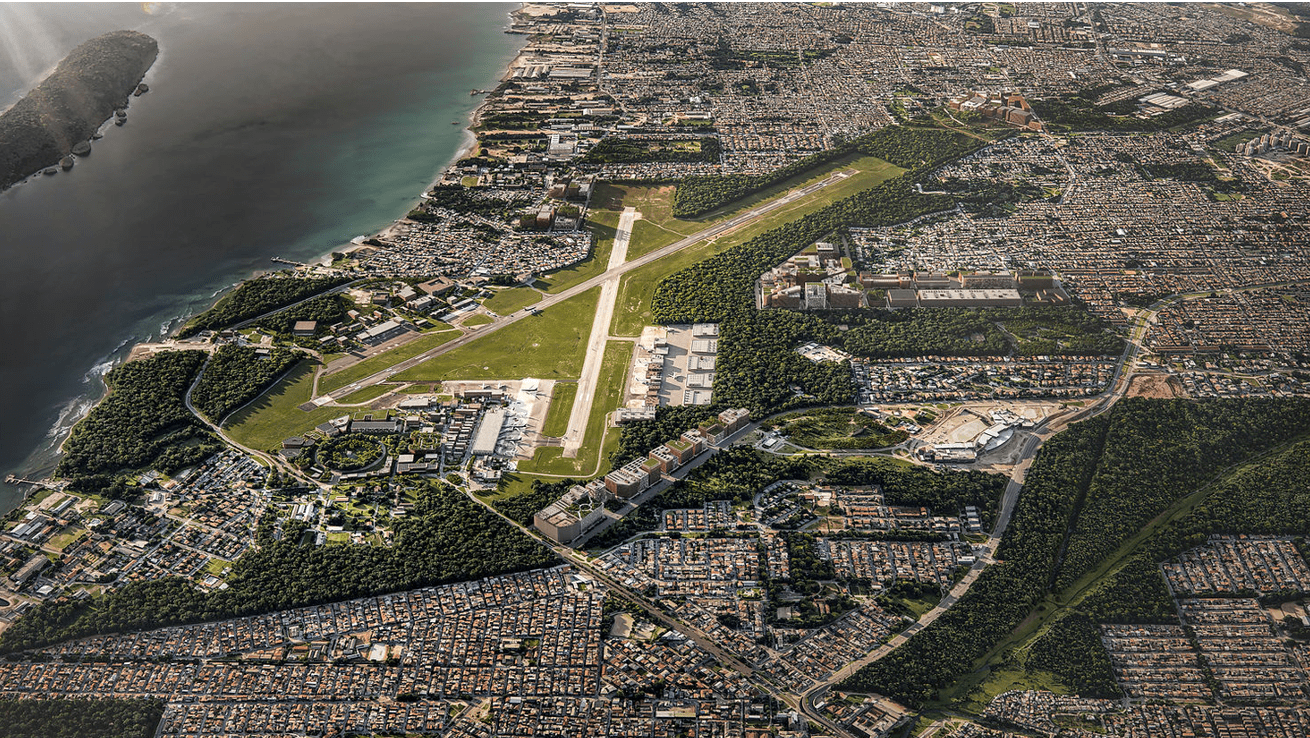How AI, Urban Science, and Systems Thinking Transformed the Plan for Belém’s New Innovation District
In 2024, Systemiq and Aretian joined forces to help NOA Airports, the operator of Belém international airport in Brazil, develop a new economic growth and regeneration strategy for the city, supported by a development masterplan. The strategy is centred around the construction of new innovation district and is anticipated to add $1.1bn to Belém’s GDP by 2035 and generate more than 16,000 jobs as well as significant long-term socio-economic resilience. This article sets out how we used AI, urban science, and systems thinking to develop the plan faster, smarter, and better than traditional methods would allow.
When NOA Airports won the concession to operate Belém International Airport, the gateway to the Amazon, in 2023, they weren’t simply acquiring an asset, they were stepping into a once-in-a-generation opportunity to transform the city and region.
Belém, the capital of Pará state in Brazil, is perched at the edge of the Amazon estuary, connecting inland river systems with global maritime routes. Founded over 400 years ago, the city served as a vital trading hub between the Amazon and the Atlantic. Today, as a city of 1.3 million people, it retains its importance as the socio-economic heart of the Amazon but also faces complex challenges related to income distribution, urban infrastructure, and social development.
NOA Airports recognised that, beyond serving as a regional transit hub, the airport could be the cornerstone of a bold regeneration strategy. Around the airport lie underutilised and fragmented areas ripe for redevelopment. NOA’s vision was to turn these into a dynamic and connected business ecosystem, acting as the engine for long-term social and economic growth in the region and building a clear legacy beyond COP30.
To do this they needed more than a traditional strategy and masterplan. They needed a new approach that could deliver long-term economic vitality and resilience, maximize the airport’s concession value, and drive tangible social and environmental impact.
This is where Systemiq and Aretian came in. Together, we brought a new model: blending AI-powered urban science and systems thinking to craft a next generation economic development strategy and masterplan, faster, smarter, and better than conventional methods would allow.
The result is a highly optimised 800,000m2 development plan that is deeply integrated into the urban and socio-economic fabric of Belém, with mixed-use commercial, residential, and green spaces and, at its heart, an innovation district focused on capturing the industries of tomorrow.
The new development is anticipated to add around $1.1bn to Belém’s GDP by 2035, equivalent to ~7% of the city’s current economic output, and generate more than 16,000 jobs.
A Better, Integrated, Data-Driven Approach
Traditional economic and development planning can be time consuming and generic, developing commercial strategies with high-level market research and trend extrapolation whilst building physical designs using qualitative archetypes and best-practice: in other words, experience-driven best guesses.
The risk is that these plans are not sufficiently optimised for their local environment. At worst they may fail and at best they may still leave impact or money on the table.
Aretian and Systemiq address these challenges through an integrated, data-driven approach that combines AI-enabled urban science with systems thinking. Aretian’s City Science model quantitatively evaluates how spatial networks, land-use configurations, and innovation clustering influence city liveability and economic performance. Systemiq brings expertise in systems thinking, incorporating a holistic, long-term view across economic, social, and environmental perspectives. The result is an economic growth strategy and development masterplanning framework that is scientifically grounded, performance-optimised, and resilient by design.
This work is done in three parts:
- a detailed diagnostic of urban and economic performance against 25 KPIs to firmly understand local context
- a commercial and innovation strategy tailored to local needs, competitive advantage, and key urban and sustainability trends
- a precise physical design to optimise land use for locational synergies, connectivity, and performance
Step 1: Diagnostic – Mapping the Urban and Economic Fabric
The first step is a deep, quantitative diagnostic of the area. Using Aretian’s urban science models, developed using advanced datasets from more than 100 cities globally, we mapped Belém’s physical structure to understand its urban performance, from mobility flows and connectivity to land use efficiency, social interaction, and access to amenities.
An example of this is shown in Figure 1. The airport and its surrounding regions scored poorly on urban design, as indicated by the dark red shading. Targeted interventions to improve connectivity and design in the new development and benefit from the associated socio-economic effects was therefore a priority.
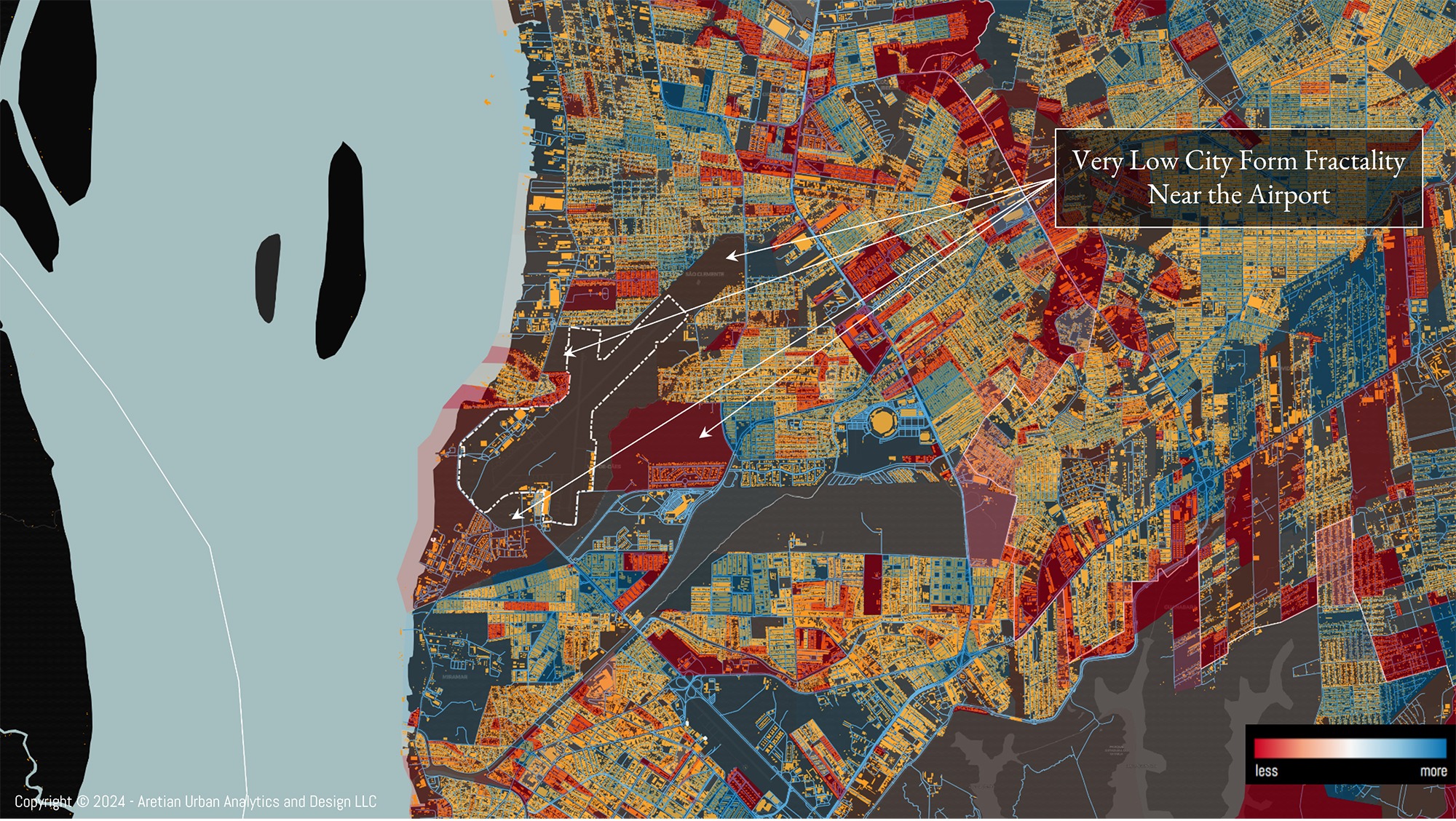
Figure 1: An urban performance mapping of Belém showing city form fractality
Urban fractality measures how well a city’s elements, like transport hubs, neighbourhoods, and parks, are designed and arranged around each other. A high fractality means a place is more efficient, connected, and liveable, with better access to services, stronger social connections, and higher economic benefits.
In parallel with this physical analysis, we conducted a detailed assessment of the city’s economic clusters and innovation potential. We identified core city industries and areas of competitive advantage, high-value and knowledge-intensive sectors, and areas of latent potential. Example mappings are shown in Figures 2 and 3. Figure 2 highlights the distribution of knowledge-intensive industries. The analysis revealed significant disparities across the Belém metropolitan region and, overall, an under-utilised innovation potential waiting to be unlocked. Figure 3 illustrates how key high-value industries in the region are linked through an ‘innovation pipeline’. The pipeline in this image sets out, for the Medical and Bio-tech sector, how research from regional universities feeds into high-innovation local industries, which then feed into key export industries.
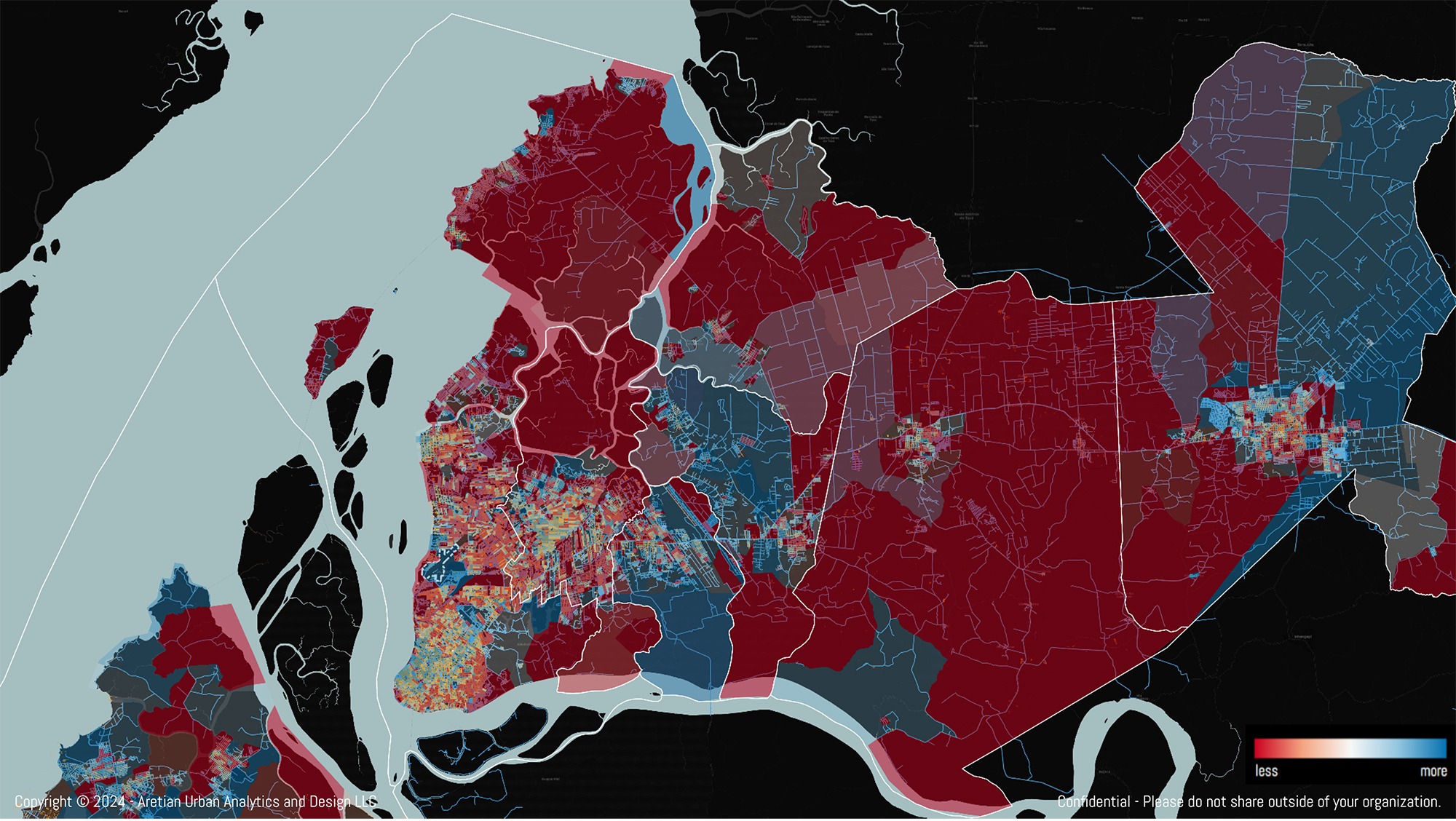
Figure 2: Revenue generation from innovative, or knowledge-intensive, industries in the Belém metropolitan region
This dual baselining process, spatial and economic, ensured that every subsequent decision was grounded in a systemic and data-driven understanding of how Belém works today and how it could work and grow in the future.
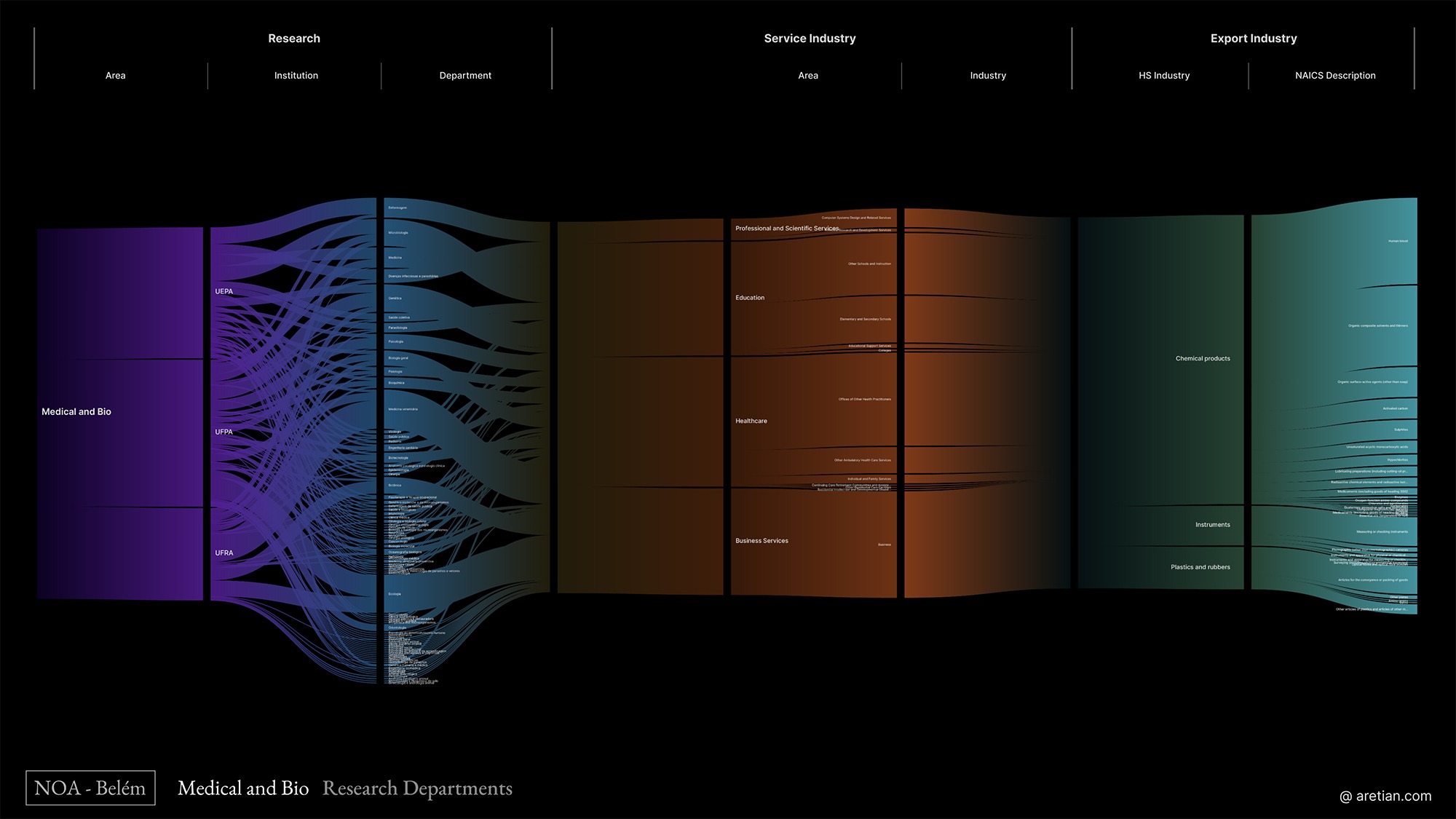
Figure 3: Innovation pipeline for the Medical and Bio-tech sector in Belém, which maps how medical and bio research conducted at the regional universities feeds into new products in high-innovation sectors, which feed into key export industries
Step 2: Commercial Strategy – Designing the Socio-Economic Engine
With a baseline in place, the next step was to define the commercial strategy. This required calculating the optimal mix of land-use types to not only maximize the long-term profitability of the concession but also contribute to the economic and social development of the region.
Commercial opportunities were grouped into three areas:
- emerging – opportunities intrinsically linked to the airport and passenger flows
- proactive – initiatives seeking to create new demand, such as knowledge-intensive and sustainable industries
- latent – opportunities to address local unmet needs, from basic services to commerce and healthcare
At the heart of the strategy was an Innovation District designed to act as the long-term economic engine for the region. The design of the district was guided by the prioritisation of 10 key industrial sectors. The analysis of these sectors considered economic density, i.e. level of existing production, and sectoral complexity, i.e. potential for growth and innovation, and sought to find an appropriate balance between the two (see Figure 4).
The result is a smart specialisation approach which strengthens traditional sectors, such as logistics and agribusiness, while investing in emerging sectors with high growth potential, such as the bioeconomy, sustainable aviation fuel, advanced manufacturing, and medical sciences.
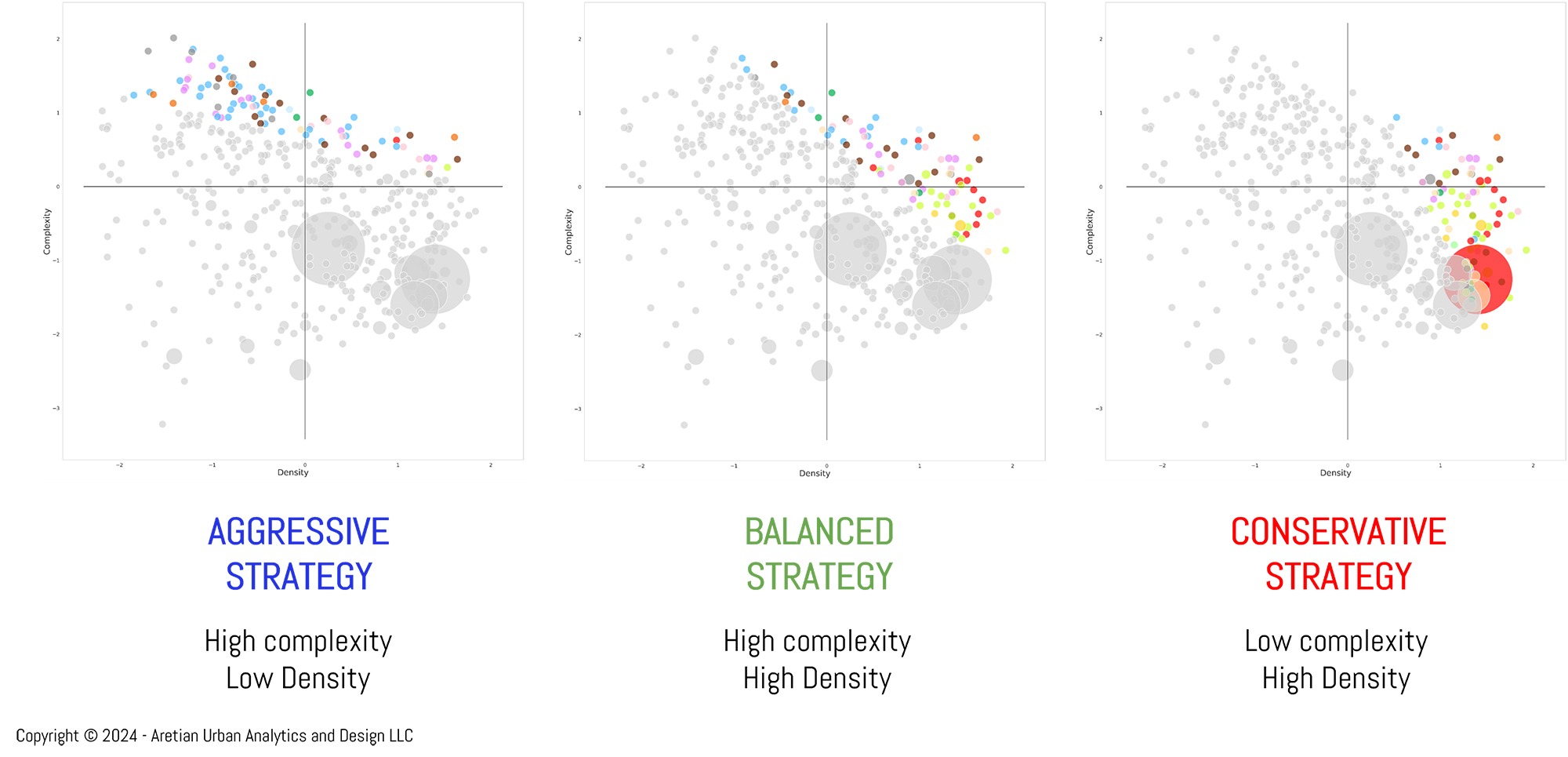
Figure 4: Belém Innovation District strategies, balancing existing local industries (high density) with ones that have high growth and innovation potential (high complexity)
Step 3: The Physical Plan – A Connected and Optimised Urban Layout
The final phase translated this commercial strategy into a spatial strategy, optimising location and layout. The site was organised into five inter-connected zones, each with a distinct function but designed to complement each other. The division into areas was carried out considering factors such as location, existing infrastructure, market demand and potential for synergy with airport activities.
These development zones (see Figure 5) include:
- a commerce hub focused on serving airport passengers
- a medical and pharmaceutical innovation ecosystem
- a logistics centre and advanced manufacturing district
- a new residential neighbourhood with a large public park and associated retail and commercial developments
- a retail district focused on serving communities to the west of the airport
The new development zones seek to build further resilience through the adoption of sustainable practices, such as the generation of on-site renewable energy, efficient management of water resources, and reduction of waste, and through an enhanced social contract with the local community. Beyond driving economic growth, the developments will improve community wellbeing through green spaces, a community health centre, and other improved social amenities.
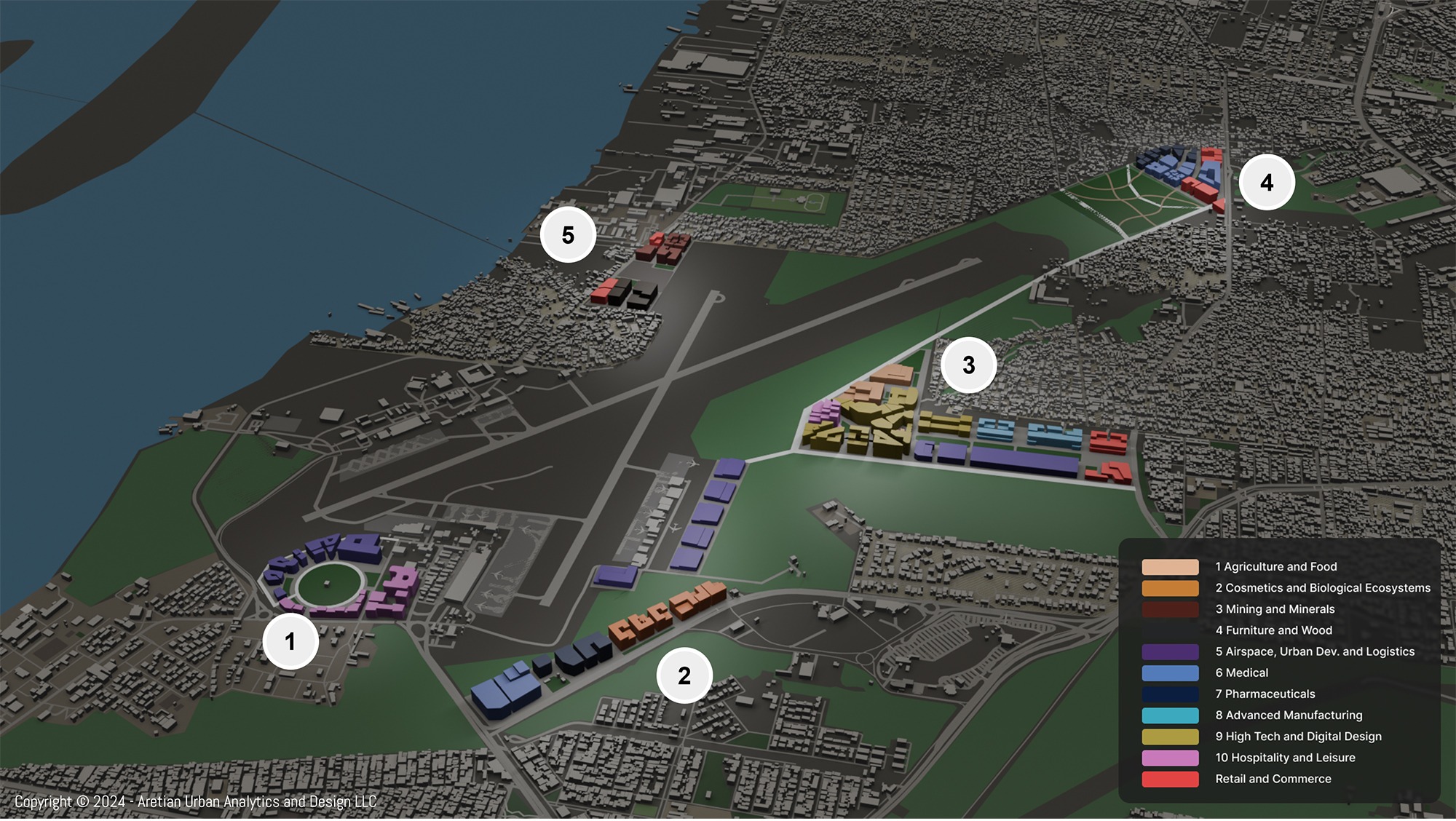
Figure 5: Visualisation of the final development masterplan
The Result: A Transformational Economic Strategy and Masterplan for the Belém Region
Economically, the site is projected to generate around $1.1 billion in GDP by 2035 and 16,000+ new jobs, increasing the city’s output by 7% and driving long-term sustainable growth.
Socially, the plan significantly strengthens access to services, infrastructure, and public spaces, creates new housing, and connects marginalised neighbourhoods with opportunity.
Environmentally, it delivers a growth model that incorporates future sustainable industries and applies multiple levers to minimise environmental impacts and optimise the use of natural resources.
And critically, it helps to build a legacy for COP30, showing that the Amazon region can be a hub not only for conservation, but for inclusive, innovative growth.
The Future of Integrated and Resilient Development Strategies
Systemiq and Aretian are already working with NOA to turn this vision into reality, developing a financing and investment roadmap and mobilising key stakeholders and partners to action.
Through this work we’ve shown that AI, urban science, and systems thinking can, in combination, become a powerful tool for building next generation economic and development strategies that optimise spatial design and long-term economic, social, and environmental performance.
This is the new standard for building better, smarter, and more resilient cities.
If you’re leading a similar journey – a development, a city, a region in transition – we’d love to share more detail on how our approach can drive better integrated outcomes.
Reach out to the teams at Systemiq [Amy Paterson, Mike Batley] and Aretian [Ramon Gras, Céleste Richard] to learn more.
About Systemiq
Systemiq, a systems change company, was founded in 2016 to drive the achievement of the Sustainable Development Goals and the Paris Agreement by transforming markets and business models in five key systems: nature and food, materials and circularity, energy, built environment and sustainable finance. Certified as a B Corp, Systemiq combines strategic consulting with high-impact work in the field, and partners with companies, the financial sector, policymakers, and civil society to promote systemic change. Systemiq has offices in Brazil, France, Germany, Indonesia, the Netherlands and the United Kingdom.
About Aretian
Aretian | Urban Analytics and Design provides advisory services and software for public and private entities that operate in the Urban Design and Economic Development space.
Aretian uses advanced data science to develop new methodologies to analyse social patterns in urban and rural settings, providing insights into economic development, architectural design optimisation, demographic analysis, and sustainability planning. Founded in 2018 at the Harvard Graduate School of Design and incubated at Harvard Innovation Labs, Aretian is dedicated to helping communities realize their full potential by promoting quality of life, economic resilience, and environmental sustainability.

